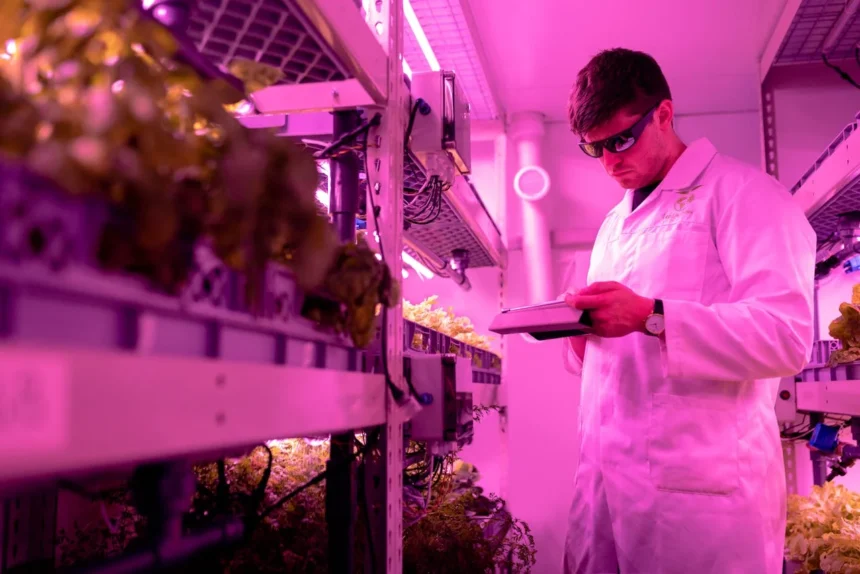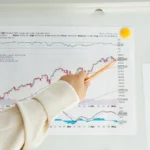The Ag-Tech Revolution: Drones, Sensors, and the Future of Sustainable Farming
For millennia, farming relied on inherited knowledge, intuition, and manual labor a traditional farming model passed down through generations. Today, that model is undergoing a profound transformation. The key question facing modern agriculture is: how to integrate technology with traditional farming to meet the growing global food demand sustainably?
This guide explores the Ag-Tech Revolution, showing that the transition isn’t about replacing age-old wisdom, but about augmenting it with precision, data, and efficiency. By blending Silicon Valley’s tools with the wisdom of the soil, we are not just increasing yields; we are ensuring the future of food.
1. Bridging the Divide: How to Integrate Technology with Traditional Farming
Integrating technology doesn’t require scrapping existing methods; it means applying precision agriculture principles to established practices. Here are five examples of technologies used in agriculture that create this bridge:
Precision Mapping & Data Analysis
Automated Care and Robotics
2. Advantages: Benefits of Technology in Agriculture
The advantages of successfully answering the question, how to integrate technology with traditional farming, are far-reaching:
- Sustainability and Resource Efficiency: Benefits of technology in agriculture primarily revolve around saving resources. Precision tools drastically reduce the use of water (through smart irrigation) and chemicals (fertilizers and pesticides), lowering environmental impact.
- Increased Yields and Profitability: By providing the perfect amount of inputs exactly when and where they are needed, farmers minimize losses and maximize crop output per acre.
- Improved Labor Efficiency: Technology handles the repetitive, labor-intensive tasks (like manual spraying or repeated data collection), allowing human farmers to focus on management, planning, and high-level decision-making.
3. Disadvantages and Challenges of Ag-Tech Adoption
While the transition is promising, farmers must be aware of the disadvantages of technology in agriculture:
- Cost and Accessibility: Initial investment in technology in agriculture examples like drones, sensors, and GPS-enabled machinery can be prohibitive, creating a digital divide between large industrial farms and smaller traditional farming operations.
- Data Security and Ownership: Smart farms generate massive amounts of data. Ethical and legal questions arise over who owns this data—the farmer or the tech company—and how to integrate technology with traditional farming without compromising operational privacy.
- Complexity and Training: Operating sophisticated digital tools requires new skills. Training and technical support are crucial for older generations or those unfamiliar with complex software interfaces.
4. The Sustainable Future: Technology and Biodiversity
A critical question is: how might biodiversity be maintained in future farming techniques? Paradoxically, precision technology is the answer.
- Optimized Land Use: By maximizing yields on existing farmland, precision agriculture reduces the pressure to convert natural habitats (like forests or grasslands) into new agricultural land, protecting existing ecosystems.
- Reduced Chemical Runoff: Lower, targeted application of chemicals means less pollution of local waterways, directly benefiting aquatic and terrestrial biodiversity.
- Habitat Preservation: Technologies like VRT allow farmers to leave small, non-productive patches of land untreated (or plant them with cover crops) to serve as crucial insect and bird habitats within the farm boundaries.
The question of how to integrate technology with traditional farming is ultimately a question of efficiency and responsibility. By merging the farmer’s deep, traditional knowledge with the precise power of pixels, we pave the way for a resilient, sustainable future for global food production.
Frequently Asked Questions (FAQs)
Q1: What are 5 examples of technologies used in agriculture?
A: The five leading examples include IoT (Internet of Things) Sensors (for soil and climate data), Drones/Satellite Imagery (for crop health mapping), GPS-Guided Tractors (for precision planting), Variable Rate Technology (VRT) (for targeted application of inputs), and AI-Powered Robotics (for automated weeding and harvesting).
Q2: What is “precision agriculture” and how does it relate to traditional farming?
A: Precision agriculture is the concept of managing crops at a precise, site-specific level rather than at the field level. It relates to traditional farming by using data and technology to improve the decisions a farmer already makes, allowing them to conserve resources and increase efficiency based on their existing knowledge of the land.
Q3: What are the main disadvantages of technology in agriculture for small farmers?
A: The primary disadvantages are the high initial cost of machinery and sensors, the steep learning curve required to master new software, and the lack of reliable internet connectivity (the “digital divide”) in many rural areas, which is essential for cloud-based Ag-Tech.
Q4: How might biodiversity be maintained in future farming techniques using technology?
A: Technology helps maintain biodiversity by promoting sustainable practices. Precision application reduces chemical runoff, protecting local ecosystems. Furthermore, optimizing yields on current land reduces the need for agricultural expansion, thus preventing the destruction of natural habitats.
Q5: How can a traditional farmer start to integrate technology on a limited budget?
A: Start small! The most cost-effective way to address how to integrate technology with traditional farming on a budget is by using smartphone apps for data logging and weather forecasting, installing basic soil moisture sensors in key field areas, and using a GPS receiver on existing equipment to improve planting and row accuracy.




